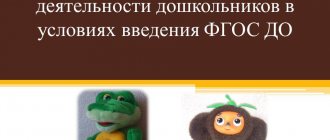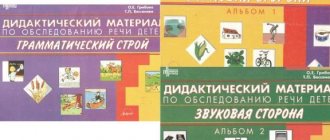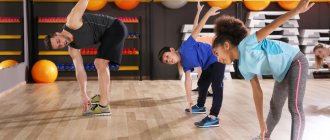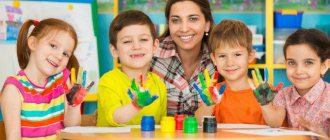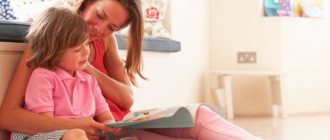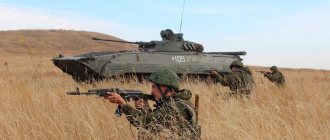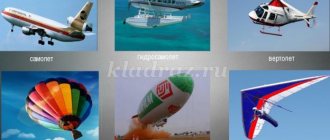Why is it important?
It may seem that too much attention is paid to such simple activities as modeling, drawing and assembling construction sets. From the outside it is not visible what efforts the child makes, his development does not look obvious, because the improvement of skills occurs gradually. However, do not underestimate productive activities.
The modern education system, which is undergoing constant changes, has recently come to the point that kindergartens have become part of the entire system. Simply put, a child’s development begins in the notorious “kindergarten.” There, experienced educators and teachers will help the child unlock his potential and develop all his positive qualities to the maximum.
Child development is the main task of preschool education
In the field of education, a child becomes not an object to be influenced, but a subject who himself plays a central role in his own development.
In other words, it is not the teacher who should “push” knowledge into the student, but the child himself who should strive to obtain the necessary information. This phenomenon appeared thanks to the humanization and democratization of education, when attention moves from the teacher to the student, and it is the latter who becomes the center of the educational process.
Improving the skills acquired in a preschool institution with parents will help both adults and children: it will be easier for you to understand your child, and he, in turn, will be pleased to demonstrate to his family what he can do. This is why it is important and necessary to develop productive skills.
“Innovative culture of a teacher” is the teacher’s formed readiness for a purposeful search and acquisition of new knowledge, the manifestation of general cultural, professional and personal qualities.
Integration is one of the most important and promising methodological directions in the development of modern education.
Actually, “integration” means the combination of several academic subjects into one, in which scientific concepts are connected by a common meaning and teaching methods. Thus, integration is one of the most favorable forms of development of the creative abilities of preschool children.
The development of children's creativity is an urgent problem of modern pedagogy and psychology, and sets the main goal for the education system - to educate the younger generation in a creative approach to transforming the world around them, activity and independent thinking, contributing to the achievement of positive changes in the life of society. We must cultivate in our children inquisitiveness, ingenuity, initiative, imagination, fantasy - that is, qualities that find vivid expression in children's creativity. The formation of a creative personality is one of the important tasks of pedagogical theory and practice at the present stage. Its solution should begin already in preschool childhood.
An important way of the pedagogical process that creates an emotionally favorable environment for each child and ensures his spiritual development is increased attention to aesthetic education and the formation of artistic and creative abilities in all children raised in preschool institutions. One of the main conditions is to develop children’s creativity in various ways, including in constructive activities, which include various types of construction (for example, paper). Creating paper crafts using unconventional techniques gives children great pleasure when they are successful, and great disappointment if the image does not work out. At the same time, the child develops a desire to achieve a positive result. The technology for working with paper may be different. Sukhomlinsky V.A. wrote: “The origins of children’s creative abilities and talents are at their fingertips. From the fingers, figuratively speaking, come the finest streams that feed the source of creative thought. The more confidence and ingenuity in the movements of a child’s hand, the more subtle the interaction with a tool, the more complex the movement required for this interaction, the deeper the interaction of the hand with social work enters into the child’s spiritual life. In other words: the more skill in a child’s hand, the smarter the child.”
Research in recent years shows that the number of children with speech development disorders is growing from year to year. Everyone knows that the level of speech development is directly dependent on the degree of formation of fine movements of the fingers. Working with paper contributes to the development of the child’s creative imagination, his imagination, and artistic taste. And the most important thing when working with paper is that various hand actions develop: coordination of both hands, coordination of hand and eye movements, and visual control. In our kindergarten, children with great pleasure make crafts using the origami, modular origami and kirogami techniques. I have developed a program for the “Hotelki-Skills” club for preschool children from 3 to 7 years old, where I am the leader.
It is known that the integrated approach meets one of the main requirements of preschool didactics: education should be small in volume and capacious. Integrated education for children allows them to see and understand any phenomenon holistically; in kindergarten there is a subject-based teaching system and it often turns out that knowledge remains scattered, artificially divided according to the subject principle, and as a result, children do not always holistically perceive the whole picture of the world around them. In my work I use the integration of additional education and the educational process, that is, I conduct integrated training.
Integrated learning is the combination of several types of activities. Thus, in the lesson “Let’s help “Princess Four” (for children 4-5 years old), children were offered tasks of a different nature:
1) Mathematical (Counting to four, number 4; consolidation of geometric shapes, classification of geometric shapes according to one criterion);
2) Tasks aimed at consolidating knowledge about the world around us. (“Princess Four” with children examines and identifies migratory birds);
3) Tasks aimed at developing speech. (With the help of artistic words, children find themselves in the “Land of Mathematics”);
4) Productive activity (Children of “Princess Four” decided to make birds using the origami technique from a square.);
Integrated classes arouse interest and help relieve stress, overload and fatigue by switching them to a variety of activities. Within the framework of an integrated approach, children consider this or that phenomenon or event from different angles, highlighting and studying different aspects:
1) social, including moral and ethical;
2) emotional - sensual, including musical;
3) artistic and aesthetic;
4) logical-mathematical;
5) naturally – scientific.
This is clearly seen in the example of the lesson “Fairytale Swan Bird” (for children 5-6 years old). Here are given:
naturally - scientific knowledge: about the lifestyle and characteristic features inherent in these birds;
socio-ecological: behavior of people in nature in relation to the animal world;
emotional and sensual: there is a conversation about the fairy tales “Wild Swans”, “The Tale of Tsar Saltan”, “The Ugly Duckling”, which describes the image of a swan. Children are offered to listen to excerpts from P. Tchaikovsky’s ballet “Swan Lake” and Saint-Saens’ “The Swan”. Children perform creative tasks - show how swans move to this or that melody;
artistic: the lesson uses paintings by Rylov “In the Blue Expanse”, Vrubel “The Swan Princess”;
productive activity: children make swans using the kirogami technique and fill in the missing parts.
The topics of classes can be varied. In such classes, there is an interpenetration of material from different sections of education and training through different types of activities. So, in one lesson, tasks of speech, mathematical development and artistic activity can be used, in another - environmental, social education and theatrical activities. The implementation of tasks occurs through problem situations, experimental work, didactic games, etc. The connecting link is the topic (image) discussed in the lesson.
The integrated structure of classes gives the child the opportunity to realize his creative abilities, develops communication skills, since in each lesson one must be able to freely express one’s thoughts, share impressions, and most importantly, children develop cognitive interest and activity, since any topic requires children to intensify their experience of real life. life in a situation of integrated occupation.
extreme clarity, compactness, and high information content of educational material are required;
logical interdependence, interrelation of integrated objects;
free placement of visual material;
change of dynamic poses;
involving specialists and parents in conducting classes.
Thus, some of the classes are conducted jointly with music directors, these are classes such as “In a certain kingdom, a paper state”, “Travels through the fairy tales of H. H. Andersen”.
Lessons with a teacher on art activities include tasks to get acquainted with painting, graphics, productive activities: drawing, modeling, appliqué.
One of the conditions for the implementation of the Rainbow program is the openness of the pedagogical process, the cooperation of the kindergarten teaching staff with parents. One of the forms of cooperation with the family was the holding of integrated parent-child activities. The purpose of such classes is to develop ways of interaction between children and parents in the classroom. Thus, at meetings of the “Family Origami Club,” children teach their parents how to make crafts using the “origami” and “kirogami” techniques: for play and theatrical activities. After which a competition is held for the best and most interesting fairy tale or beautiful toy.
Work on this topic has been carried out for many years and now we can draw conclusions:
1. Planning classes of an integrated nature, and the use of new technologies in one’s practical activities provides an opportunity for self-realization, self-expression, helps to increase the level of professional interest, creative activity, and leads to a targeted search, that is, the innovative culture of teachers is developing.
2. Integrated classes contribute to the formation of a holistic picture of the world, since an object or phenomenon is considered from several sides: theoretical, practical, applied;
3. Children develop cognitive interest, and classes are highly effective.
4. Integrated classes unite children with common impressions, experiences, and contribute to the formation of collective relationships.
5. Such activities promote closer contact between children, specialists and cooperation with parents, resulting in the formation of a child-adult community.
6. Integration helps reduce the number of classes, free up time for play activities and walks, which helps improve children's health.
How to organize productive activities for children in older preschool age at a preschool educational institution
Organize productive activities in senior and preparatory groups of kindergarten according to thematic plans. Such classes are carried out in stages.
First, a system of entertaining productive activities is developed. For this purpose, various methodological and interactive literature is studied.
Many teachers, when organizing productive activities with children of senior preschool age, rely on the developments of a team of authors under the leadership of O.V. Dybina. the authors offer their own interesting ideas for carrying out non-traditional techniques.
One of the stages is the formation of basic competencies in children of senior preschool age. There are both creative abilities and the communicative side of the activity.
MAGAZINE Preschooler.RF
MAIN TYPES OF ACTIVITIES OF CHILDREN 3-4 YEARS OLD An important indicator of a child’s development is the level of his mastery of various types of children’s activities. game Game is the leading activity of a preschooler. The most significant changes in the child’s psyche occur in play. These changes prepare him for a new stage of development. Thinking and imagination develop in the game. Role-playing game Three-year-old children feel independent and are ready to do everything like adults. Children themselves do not name roles; they simply perform roles (roles in action), carrying out individual play actions.The game is monotonous - as a rule, it is repetitions of the same operations (for example, feeding)
Despite the fact that play is a central characteristic of a child’s development, productive activities, and above all visual activity and design, are of great importance for him. CONSTRUCTION Children's design is an interesting, but quite complex practical activity. Children 3-4 years old can carry out targeted actions to create simple structures from building materials. By the age of 4, children: - distinguish and correctly name the main parts of building materials (cube, brick, prism), concepts (high-low, wide-narrow, long-short); -designed according to a ready-made model; -construct elementary object structures consisting of 2-3 main parts;
Drawing A 3-4 year old child creates a schematic drawing of an object. the image is ahead of the concept. When starting to draw, a child does not know what he will succeed in. If the image turns out not very similar to what was planned, he will easily change his mind: “The car didn’t turn out well, it’s a pussy.”
The richer the child’s world, the more interesting his drawings will be. Applique Applique is a way of creating artistic images from various figures, cut out of any material and pasted onto a certain background. By the age of 4, children: - lay out and paste elements of decorative applique on a strip, square , using first the same, and then different in color, shape and size of the figure; - compose and paste simple schematic images (beads, balloons, handkerchiefs, flags on a string) and more complex ones (fungus, house) In early preschool age, due to insufficient development of small muscles of the hand, poor coordination of movements and visual control over their actions, children They do not work with scissors; they applique from ready-made geometric shapes.
Development of motor skills Indicators of the development of motor skills of children 3-4 years old: - the child can walk along a gymnastic bench; - hits the ball on the floor and circles it with both hands (3-4 times) - transfers small objects (from the table to the box)
Indicators of mental development 4 years PERCEPTION - can select one card from several by the name of color or shape - can select objects or building parts according to a certain shape - can match 5-7 objects of the same shape by size. -uses prepositional words in speech. THINKING - can, according to the scheme proposed by an adult, assemble a simple building from cubes (4-5 parts) IMAGINATION - can give several answers to the question: “what does the figure look like?”; completes an unfinished fairy tale with 2-3 sentences. Indicators of speech development Phonetic side of speech A child can engage in onomatopoeic exercises, pronouncing loud vowel sounds. He develops a special sensitivity to the sound side of speech
Grammatical structure of speech The child actively uses grammatical forms. Distinguishes between singular and plural objects (dishes, clothes, toys). Correctly uses words denoting baby animals, identifies the characteristics of objects (shape, color, size), understands the purpose of prepositions, uses different intonations (interrogative, narrative, motivating) Social development Play interaction 3-4 years In the beginning, play nearby. Children participate in joint pranks. By the end, they are able to attract another child to play. 2-3 people unite for it. But roles are not yet distributed, there is no interaction between characters, and the gaming desires of the other are not taken into account. Thank you for your attention!
| Next > |
Lesson results
It is necessary to create a system of activities for children. If the teacher correctly distributes productive activities, and all its types are involved, the result will be as follows:
- children will be developed creatively;
- the group will have an excellent psychological atmosphere;
- preschoolers will be well prepared for school classes.
Most often, productive activity connects several areas, such as creativity, socialization, cognition, labor, communication, and the safety of preschoolers. Artistic and productive activities and creativity help develop a child’s speech. At this age there are many problems with her, such as poverty (poor vocabulary), monosyllabicity, it consists only of simple sentences, and the words are far from beautiful and literary. For example: “what”, instead of “what”, “beautiful flower”, instead of “I like this flower because...”, but instead of “I don’t want this because...” you can hear “leave me alone”, and others expressions. Children need to be taught to speak beautifully and explain their preferences more fully and efficiently.
In addition, children receive moral education, consolidate the knowledge acquired in the learning process, and develop the necessary character qualities:
- activity;
- independence;
- observation;
- determination;
- patience;
- the desire to finish what you started;
- the ability to “sort out” the information received and assimilate it.
Productive activity also improves the physical condition of children. They become more cheerful, their mood improves, their overall tone increases, their character becomes more relaxed and active. After classes and during them, the child is active. It is important to immediately correctly form his posture, gait, and body position, because all these qualities will be useful to the little man in the future. Productive activity allows you to coordinate movements, “tune” the vestibular apparatus, and strengthen the muscles.
Now we propose to get acquainted with the main types of productive activities. And at the same time we will note the features of each.
Presentation “Productive activities as a means of developing a child’s creative abilities”
Alena Grigorieva
Presentation “Productive activities as a means of developing a child’s creative abilities”
slide 2:
Productive activities of a preschooler are activities in which the child , modeling objects of the surrounding world, comes to the creation of a real product (drawing, design, three-dimensional image)
as a material embodiment of ideas about an object, phenomenon, situation.
Productive activities include visual (drawing, modeling, appliqué)
and constructive
activities .
slide 3:
Goal: development of children's creative abilities in productive activities .
Objectives: - lead children to create an expressive image when depicting objects and phenomena of the surrounding reality;
— improve and deepen visual skills;
— teach techniques of unconventional techniques using various materials;
- contribute to the development of the child’s creative potential , using various techniques in work;
- to form an aesthetic attitude towards the environment; cultivate artistic taste;
- develop fine motor skills and tactile perception;
— cultivate a culture of activity , develop cooperation skills.
slide 4:
Methods of work: Formation of play motivation (interest in activities, desire to engage)
;
Visual methods (examination, observation, slides, presentations , pictures, diagrams, videos, excursions, etc.);
Verbal methods (story, artistic expression, conversation, explanation, clarification, reminder, encouragement);
Practical methods (exercise method, laboratory work method, practical work method, game method, modeling method, elementary method);
Reproductive method (repetition; working in notebooks with graphic tasks; performing form-building movements with the hand).
slide 5:
Types of non-traditional drawing techniques
Junior group (2-4 years)
: Painting with a hard semi-dry brush, finger painting, palm painting, painting with a cotton swab, potato stamps, cork imprinting.
Middle group (4-5 years old)
: foam rubber imprint, imprint with rubber stamps, leaves, wax crayons + watercolor, candle + watercolor, drawing with crumpled paper.
Senior and preparatory group (5-7 years old)
: landscape monotype, drawing with a toothbrush, combing paint, spraying, air felt-tip pens, blotography with a tube, photocopy - drawing with a candle, scratch paper black and white, color, drawing with threads, drawing with salt, sand, semolina, subject monotype.
slide 7:
Non-traditional applique technique: 3D applique (volumetric, broken, quilling, modular applique (mosaic, ribbon applique, origami, trimming, fabric applique, straw applique, cereal applique, etc.
slide 8:
Types of non-traditional modeling techniques: imprinting, modular, scratching, on a frame, from rings, painting, sculptural, constructive, plasticineography, test plastic.
slide 9:
Creative is the creation of a plan , technical is the embodiment of a plan.
Types of children's design: from building materials, practical and computer, from parts of construction sets, from paper, from natural materials, from large-sized modules.
slide 11:
Conclusion:
Productive activities in kindergarten meet the needs and interests of preschool children and have ample opportunities for cognitive, social-communicative, speech, artistic, aesthetic, and physical development . The child is provided with almost unlimited opportunities for self-expression and creativity in productive activities and, developing in communication with others, he receives a positive effect from the result and process of the activity .
Bottom line
As you can see, productive skills developed in preschool age have a lot of advantages:
- development of the pupil’s aesthetic and moral feelings;
- improving his mental and physical aspects;
- formation of concepts about space, form, composition;
- acquisition of additional skills in working with tools and office supplies;
- development of perseverance, hard work, logic.
And in order to achieve all this, you don’t need to do much: provide the baby with all the necessary materials and together with him try to make a craft, sculpt a figurine or draw a picture.
This will bring pleasure to both you and your child, and will help him take another step towards his successful education. leave a comment
Productive activity for preschoolers: drawing
Kids especially love to draw. Here they have scope for imagination, everything is depicted on paper: heroes of fairy tales, space, forests, individual objects, patterns, scenes experienced in life - here the child fully realizes his thinking. By drawing, children once again relive the emotions they have experienced and reveal their thoughts. Usually, a drawing task is given on independent topics, that is, everyone decides for themselves what, how and in what color to depict. From the drawings you can judge the baby’s character and find out his fears that he keeps to himself. Sometimes it is recommended to visit a psychologist so that he can solve the child’s problem and correct his understanding of the world around him.
Formation of productive activity of a preschooler
It is necessary to properly develop a training program. Children should not be doing the same thing every day. If your child loves to draw, but does not want to design or sculpt, you need to interest him. Ask to build or sculpt your house, and after it is ready, let him tell you about it, about where it is, where he likes to walk.
It is necessary to talk about the finished products, be it a drawing or an applique. At this time, speech is formed and vocabulary is replenished. For example, a child drew a kitten. Let him come up with a nickname, tell him about his character, preferences in food and games - this is creative thinking.
Productive activity is necessary not only for preschoolers, but also for primary school students. Many schools have created children's creativity centers, which are a great help in learning.
What is the success of developing productive activities for older preschoolers?
Productive activities are effective in developing various mental processes in preschoolers.
When a child draws, he thinks about or plans the result of the image. This is how the imagination develops. One might say that creative imagination precedes the production of a product. In modeling and various types of applique, children also represent their impressions of what surrounds them in the world, how they relate to their surroundings.
The application will help your child become familiar with different ways of processing paper. Children of senior preschool age cut out, tear, crumple, twist, bend, fold, and glue paper or its individual parts.
In preschool art classes, children develop aesthetic perception.
Products created by children create a pleasant atmosphere of cooperation. Children enjoy working together. Such activities cultivate moral qualities in preschoolers; they develop hard work and responsiveness.
When children engage in design activities, they gain very good imaginative thinking skills.
Art classes, design, and modeling develop in children of senior preschool age various skills that will later be useful to them at school.
Classes primarily shape the emotional sphere of preschoolers.
Such activities are always accompanied by communication, so here we can talk about the development of speech. Creating crafts stimulates speech activity in children. Children imitate the speech of an adult; they develop in terms of dialogical speech.
Therefore, the types of activities we are considering develop the communicative functions of speech in older preschoolers.
